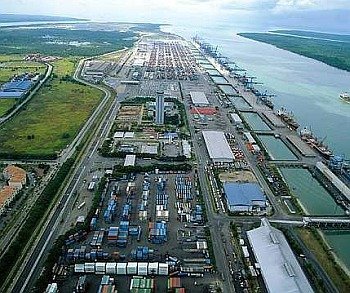Rampant Southeast Asian boxport expansion questioned

Boxport rivalry in Southeast Asia could be set to get a whole lot more intense with recent news from Kuala Lumpur that the government has approved in principle plans submitted by Westports to more than double its annual container handling capacity to 30m teu.
Between neighbours Singapore and Malaysia alone more than 60m teu of new container terminal capacity is slated for construction in the coming couple of decades. However, how these ports remain well utilised amid such a glut of new quayside remains open to question, especially as nearby Indonesia is building its own mega hubs.
Dr Jonathan Beard, one of Asia’s most respected ports experts and the head of transportation and logistics in Asia for consultants Arcadis, told Splash: “The vast majority of proposed new capacity is targeted at the regional transhipment market – there is only so much demand to go around, and a limited number of liner alliances that determine hub strategy and those hubs are not easily moved.”
Malaysian ports find themselves in a fight for boxes with Singapore, where a giant new 65m teu capacity port is under construction at Tuas, to the west of the republic.
Westports currently operates eight adjacent terminals with a ninth due onstream soon which will give the port an annual design capacity of 13.5m teu.
Westports has laid out plans another 10 terminals through to 2040.
“The timing for this and other proposed Malacca Straits developments is critical – as and when needed, or significantly ahead of demand?,” Arcadis’s Beard commented.
Westports is one of two at Port Klang. Northport is the other one, another facility that has been ramping up infrastructure in recent years.
The Port Klang Authority (PKA) has detailed plans to develop a huge new terminal complex on a nearby island. To be built on Pulau Carey the RM200bn ($44.7bn) project has attracted interests from Malaysian and Indian conglomerates.
In and around the Port Klang area, many other port developments are also underway. Just 86 km south is the RM12.5bn Kuala Linggi International Port in Malacca, which is aimed at the oil and gas industry. Then there is Melaka Gateway, 126km from Pulau Carey, a project costing RM43bn.
Directly opposite Singapore lies the Port of Tanjung Pelepas (PTP), a fast growing port that has outlined plans to double its capacity to 22.2m teu by 2030.
Plans by Port Klang to develop so much new capacity come at a time where it has been hammered on certain tradelanes by the recent alliance merry-go-round. This April saw a serious reshuffle of the global liner alliances, something that has not been kind to Port Klang on the key Asia-Europe tradelanes.
“Port Klang lost major connectivity [on Asia-Europe routes] after the launch of the new alliances in favour of Tanjung Pelepas and Singapore,” container shipping consultants SeaIntel noted in their most recent weekly report. SeaIntel also noted Port Klang had seen a “significant decline” in the number of port calls on Asia-Mediterranean routes.
Finally, in the background of all of this port development along the Malacca Strait, is the reemerging threat that the Thais could – with Chinese investment – finally push ahead with the centuries-old Kra Canal project, a waterway linking the Andaman Sea with the South China Sea which would negate the need for huge volumes of traffic to transit via Malacca.
